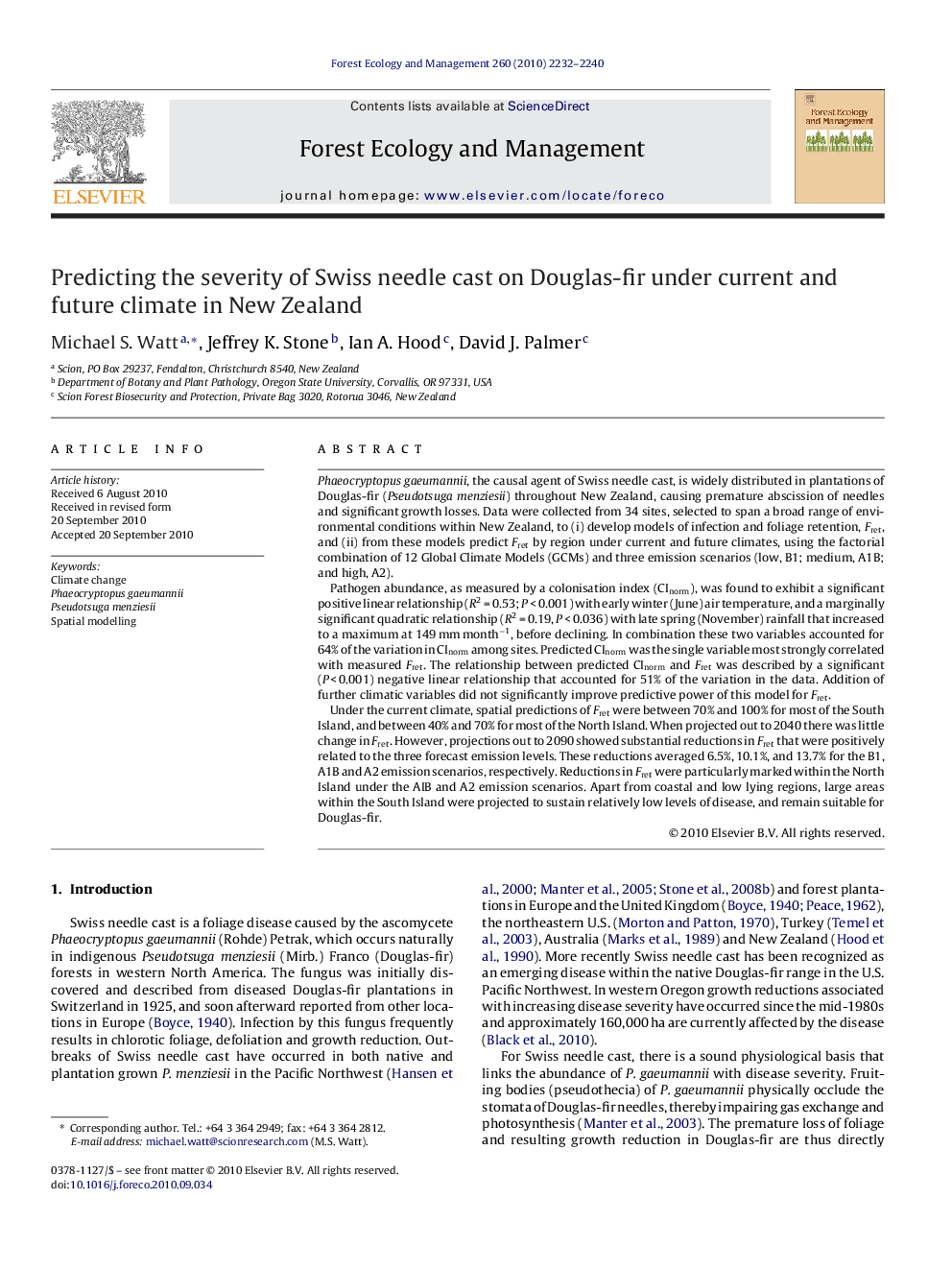| کد مقاله | کد نشریه | سال انتشار | مقاله انگلیسی | نسخه تمام متن |
|---|---|---|---|---|
| 87795 | 159266 | 2010 | 9 صفحه PDF | دانلود رایگان |

Phaeocryptopus gaeumannii, the causal agent of Swiss needle cast, is widely distributed in plantations of Douglas-fir (Pseudotsuga menziesii) throughout New Zealand, causing premature abscission of needles and significant growth losses. Data were collected from 34 sites, selected to span a broad range of environmental conditions within New Zealand, to (i) develop models of infection and foliage retention, Fret, and (ii) from these models predict Fret by region under current and future climates, using the factorial combination of 12 Global Climate Models (GCMs) and three emission scenarios (low, B1; medium, A1B; and high, A2).Pathogen abundance, as measured by a colonisation index (CInorm), was found to exhibit a significant positive linear relationship (R2 = 0.53; P < 0.001) with early winter (June) air temperature, and a marginally significant quadratic relationship (R2 = 0.19, P < 0.036) with late spring (November) rainfall that increased to a maximum at 149 mm month−1, before declining. In combination these two variables accounted for 64% of the variation in CInorm among sites. Predicted CInorm was the single variable most strongly correlated with measured Fret. The relationship between predicted CInorm and Fret was described by a significant (P < 0.001) negative linear relationship that accounted for 51% of the variation in the data. Addition of further climatic variables did not significantly improve predictive power of this model for Fret.Under the current climate, spatial predictions of Fret were between 70% and 100% for most of the South Island, and between 40% and 70% for most of the North Island. When projected out to 2040 there was little change in Fret. However, projections out to 2090 showed substantial reductions in Fret that were positively related to the three forecast emission levels. These reductions averaged 6.5%, 10.1%, and 13.7% for the B1, A1B and A2 emission scenarios, respectively. Reductions in Fret were particularly marked within the North Island under the AIB and A2 emission scenarios. Apart from coastal and low lying regions, large areas within the South Island were projected to sustain relatively low levels of disease, and remain suitable for Douglas-fir.
Research highlights▶ The impact of Swiss needle cast on Douglas-fir was predicted for New Zealand. ▶ Under climate change foliage retention markedly reduced in the North Island. ▶ Lower reductions in foliage retention were predicted for the South Island to 2090.
Journal: Forest Ecology and Management - Volume 260, Issue 12, 15 December 2010, Pages 2232–2240